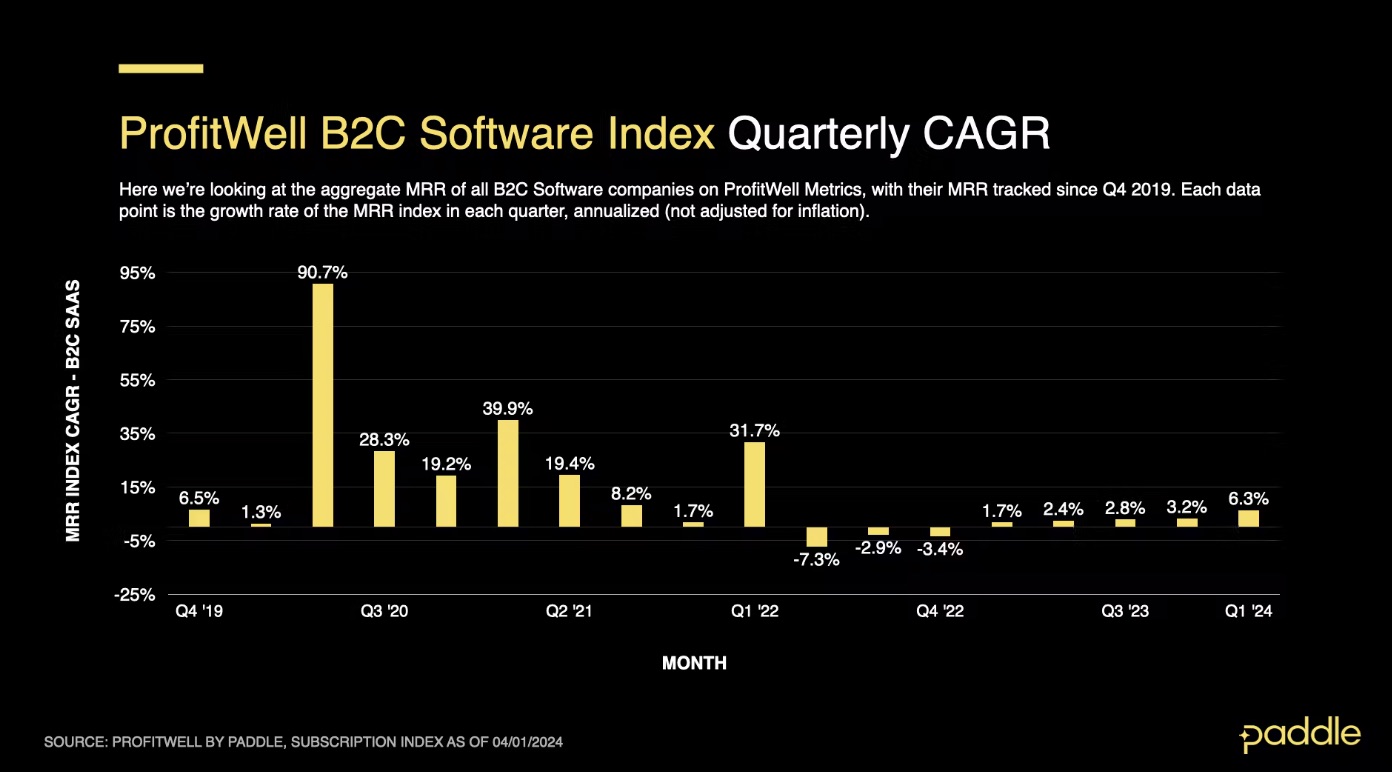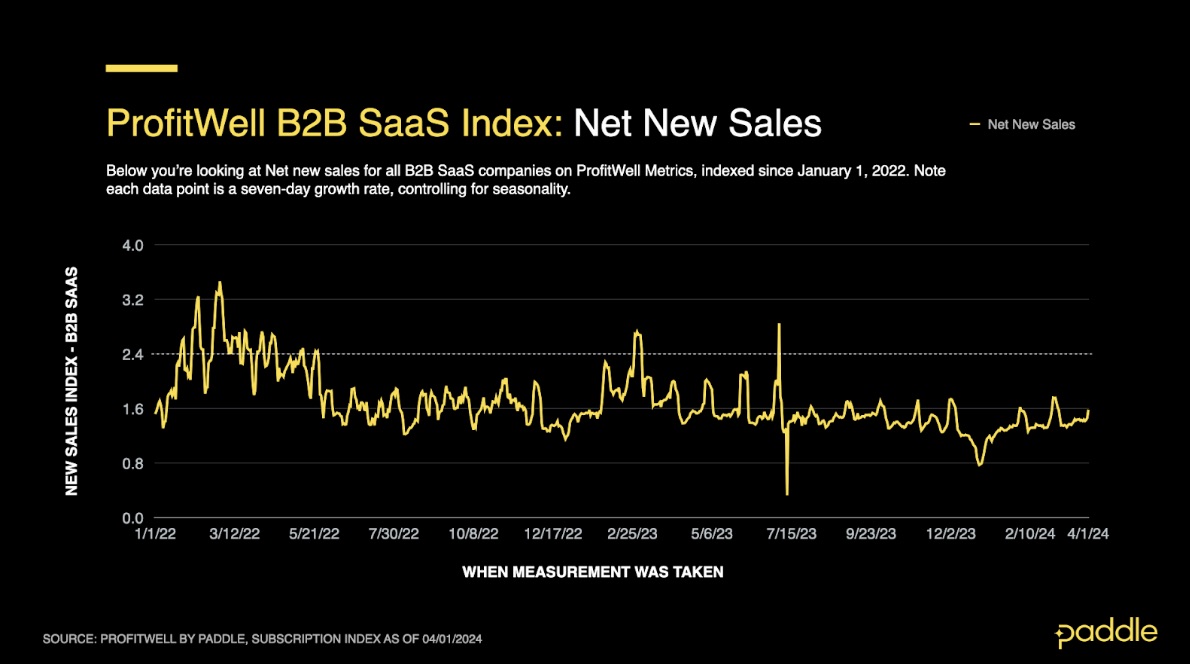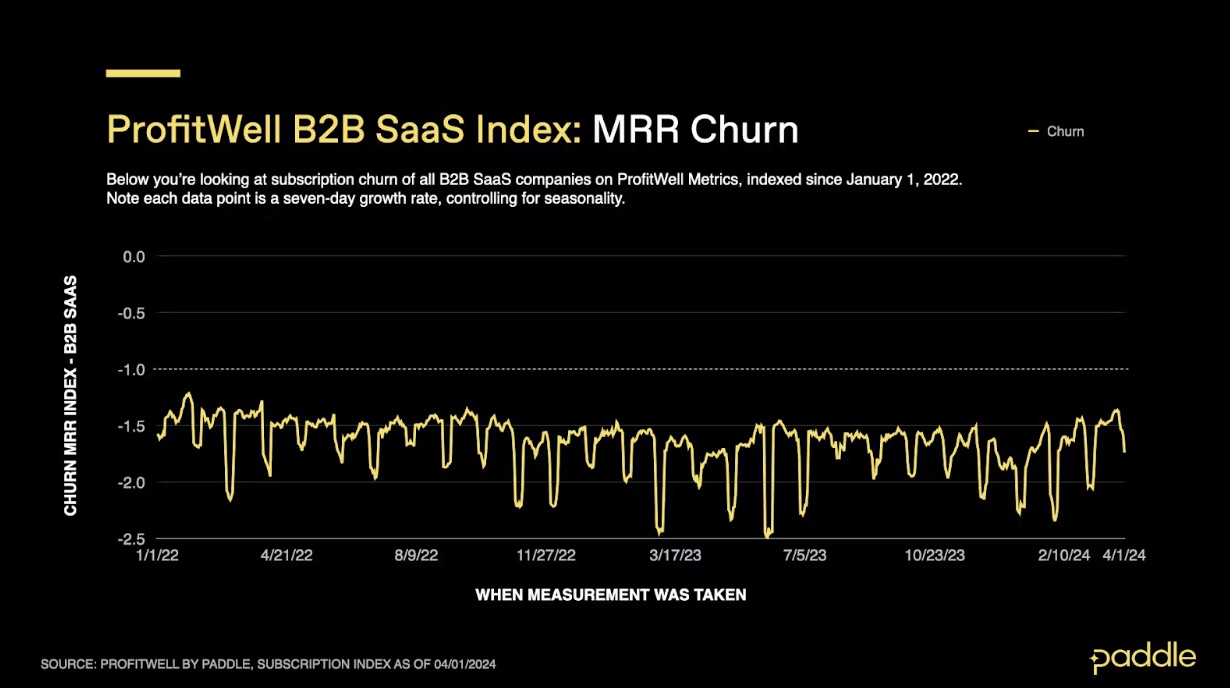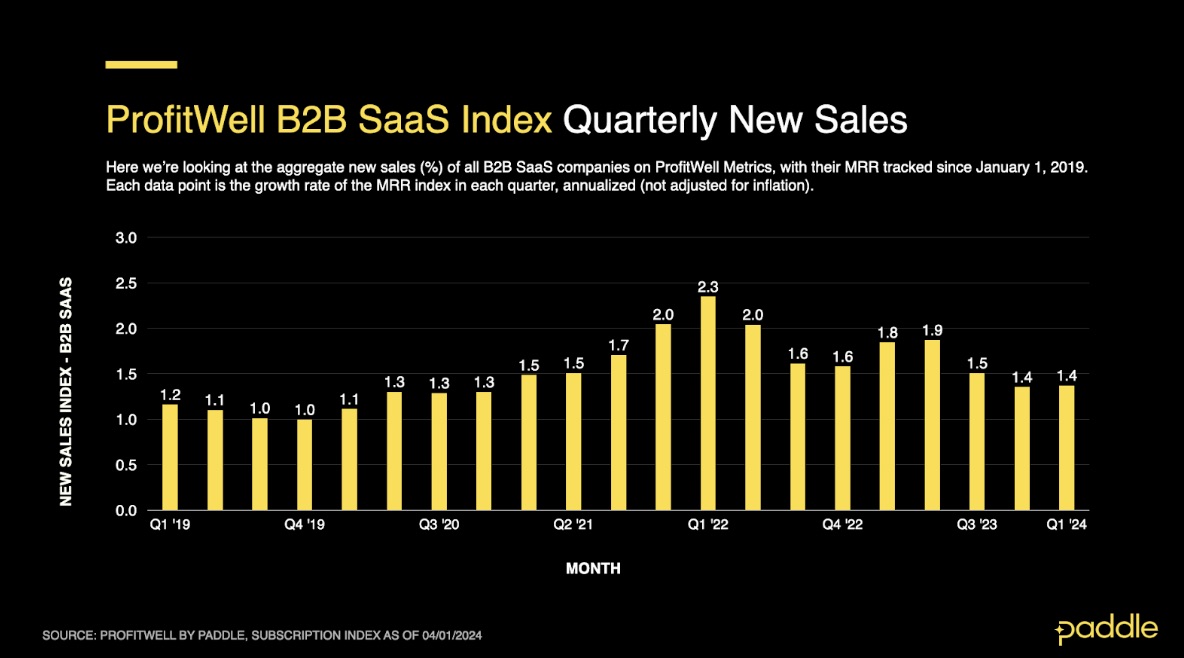
SaaS corporations were growing in 2023, but they were growing at a much slower rate than during the pandemic-driven hypergrowth years. At the same time, revenue growth has slowed and churn rates have reached an all-time high, reflecting a period of post-pandemic “normalization” as rates of interest rise and enterprises reduce software spending.
After a yr marked by slowdowns and cutbacks, our evaluation of real-time subscription data from over 34,000 software vendors in the first quarter of 2024 shows that the SaaS market began the yr in a more positive mood, with growth returning and churn slowing, and corporations adapting to the latest realities of a recalibrated software market.
These findings come from my company’s latest SaaS metrics report, Row, which is a provider of payment infrastructure for software producers. By using an anonymized dataset from SaaS corporations that use our ProfitWell Metrics tool, we are able to see industry trends on key metrics corresponding to worker growth and attrition.
Signs of improved health
Based on our data from the first quarter of 2024, we saw signs of improving health in SaaS.
In particular, there was a return to B2C software development, with a CAGR of 6.3% in the first quarter – double the growth in the fourth quarter of 2023 and the best quarter since the first quarter of 2022.
This was due to the increase in latest sales activity on the B2C market since the end of 2023, in addition to an increase in the variety of subscription updates by 17.5% in February alone.
This bodes well for the B2B sector, as consumer revenue growth is often a leading indicator of future business revenue growth.


New sales to B2B SaaS corporations also rose dramatically, up 20% from December’s two-year low.
From a quarterly latest sales perspective, B2B averages are still lower compared to the last few years of strong growth (2021 and 2022), but are up 40% compared to pre-pandemic results (2019) – further evidence of markets reconciling as they stabilize at a lower level.


B2B software leaders adapt to the ‘latest normal’
It’s value noting that despite these early signs of improving sales and revenue growth, B2B customer churn dropped to an 18-month low, a 14% improvement since December and a 12% decline year-over-year.


This comes amid an increase in upgrades and downgrades by corporations moving customers to different tiers or subscription plans to prevent them from churning.
This suggests that B2B SaaS corporations are rightly actively trying to combat customer churn and increase revenue from their existing customers.
Maintaining high levels of worker attrition and focusing on retention and expansion underscores the concerted effort across the sector to strengthen relationships with existing customers and proceed to deliver value to them, which is much more priceless in a low-growth environment.
Strategies that thrive as the SaaS market resets
As the market goes through this recalibration, there are many strategies that SaaS corporations should employ to ensure sustainable scaling.
Balance product-driven and sales-driven growth
In a more difficult sales environment, a combination of product-led growth and sales-led growth is an obvious option for SaaS founders. Very few corporations will have the ability to scale by relying solely on one or the other.
For corporations with a strong PLG offering, overlaying a sales-led approach means product teams can provide sales with product usage data to goal enterprise-level customers and acquire long-term customers.
For those that have a largely SLG traffic, opening your product with PLG expands the total addressable market. Most importantly, it also forces you to create a product experience that sells itself. More people using your product means greater popularity and greater opportunities to engage your sales team at the right time.
Successfully combining these two moves leads to a more efficient overall sales function that has expansion and retention built into it.
Experiment with latest growth channels
To proceed to grow, corporations must find ways to increase efficiency while reducing costs. For example, a growing trend in the mobile app space is to unlock growth by encouraging customers to make purchases outside of traditional app stores.
Selling through the app store has advantages, but comes at a cost. Most charge a high 30% sales commission and force corporations to adhere to specific frameworks in dealing with customers that limit flexibility and the ability to generate revenue.
To combat this, many corporations now insist that app customers transact through their web sites slightly than recoup lost revenue and speed up growth. If done right, the advantages could be enormous, including access to a larger customer base, greater flexibility and insight into customer needs, and greater control over the sales and marketing experience.
Build a strong foundation for international sales
One growth strategy that no SaaS company should overlook is the ability to sell globally. Growth has slowed in traditional core markets corresponding to the US, Canada and the UK, but markets in Europe, Australia and New Zealand proceed to grow significantly.
To scale successfully in international markets, SaaS corporations must make sure that they have done their due diligence and have the capabilities to overcome potential obstacles, corresponding to accepting international payments, complying with tax regulations, supporting different currencies and languages, and minimizing foreign exchange fees.
Reasons for optimism in 2024
After several difficult years, the first signs of encouragement to introduce SaaS in 2024 are emerging.
While each B2B and B2C trends may change in the coming months, a greater focus among SaaS corporations on combating customer churn and delivering value to existing customers suggests that founders are adapting well to the “new normal” in SaaS.
Combining these good habits of striving for efficient and more sustainable growth with the strategies outlined above will give SaaS corporations a great opportunity for a successful yr ahead.


